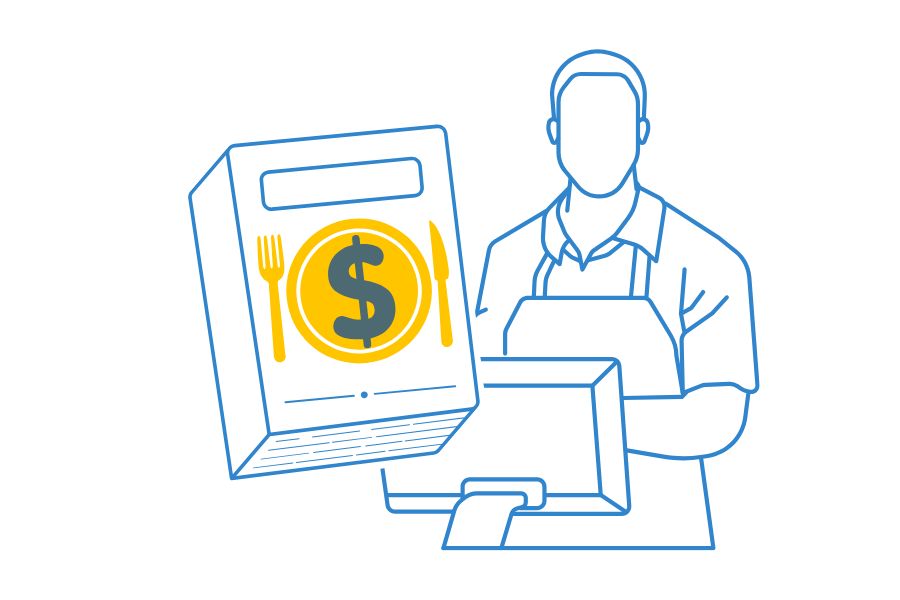Financial Health Check: Key Ratios for a Successful F&B Business in Singapore
As an F&B business owner in Singapore, your primary focus is likely on delivering exceptional food and service. However, to ensure your long-term success, it’s vital to keep an eye on your financial health. A financial health check is a practical way to assess your business’s financial performance, and key ratios play an essential role in this evaluation.
In this blog, we’ll explore the most important financial ratios for your F&B business in Singapore and explain how they can help you make informed decisions that support sustainable growth.
Why Financial Health Checks Matter for Your F&B Business in Singapore
Performing regular financial health checks is crucial for F&B businesses. It allows you to:
- Monitor cash flow and ensure liquidity to meet your financial obligations.
- Identify areas for improvement, such as reducing costs or improving operational efficiency.
- Make informed decisions about investments, expansions, and resource management.
- Prepare for future growth by understanding your financial standing and identifying potential risks.
A thorough financial health check gives you clarity, ensuring you’re always on track to meet your business goals.
Key Financial Ratios Every F&B Business Should Track
1. Current Ratio: Assessing Liquidity and Short-Term Financial Health
The current ratio measures your ability to cover short-term obligations with your current assets, such as cash, inventory, and receivables.
- Why it matters: A healthy current ratio ensures you can cover your business’s immediate financial needs without relying on external funding.
- How to interpret it: A ratio above 1 is ideal, indicating you have more assets than liabilities. A ratio below 1 may signal cash flow issues.
Example:
If your restaurant has SGD 150,000 in assets and SGD 120,000 in liabilities, your current ratio is 1.25. This suggests you can comfortably cover your short-term debts with available assets.
2. Quick Ratio: A More Conservative View of Liquidity
The quick ratio is a stricter measure than the current ratio, excluding inventory from your assets. This gives a clearer view of your ability to meet short-term liabilities without relying on selling inventory.
- Why it matters: A quick ratio above 1 suggests you can easily pay off your debts with liquid assets, whereas a ratio below 1 could indicate a liquidity problem.
- How to interpret it: A ratio above 1 means your business has sufficient liquid assets, while a ratio below 1 could signal potential cash flow concerns.
Example:
If your café has SGD 180,000 in liquid assets and SGD 120,000 in liabilities, your quick ratio is 1.5, indicating strong liquidity.
✅ Tired of surprise fees from accounting services? We prioritise your savings and efficiency. From multicurrency accounting to tax filing, Counto handles it all—with unlimited transactions. Explore our transparent, all-in-one pricing here.
3. Profit Margin: Measuring Your Business’s Profitability
Profit margin ratios measure your business’s profitability. Two key types are:
- Gross Profit Margin: The percentage of revenue remaining after deducting the cost of goods sold (COGS).
- Net Profit Margin: The percentage of revenue left after all expenses, including taxes and overheads, are deducted.
- Why it matters: High profit margins suggest efficient operations and good cost management, while low margins may indicate areas for improvement.
- How to interpret it: A higher margin generally means you’re efficiently controlling costs, while a low margin could suggest excessive overheads or high food costs.
Example:
If your restaurant generates SGD 500,000 in revenue and has SGD 200,000 in food costs, your gross profit margin is 60%. If your net profit after all expenses is SGD 30,000, your net profit margin is 6%, indicating a healthy return on sales.
4. Debt-to-Equity Ratio: Managing Financial Risk
The debt-to-equity ratio compares your business’s debt to its equity. This ratio helps assess how much of your business is financed by debt versus owner’s equity.
- Why it matters: A high debt-to-equity ratio signals that your business relies heavily on debt, which increases financial risk. A lower ratio indicates less reliance on borrowed money, reducing financial vulnerability.
- How to interpret it: A ratio above 1 suggests higher reliance on debt, which could be risky. A ratio below 1 is generally considered safer and more balanced.
Example:
If your F&B business has SGD 300,000 in debt and SGD 600,000 in equity, your debt-to-equity ratio is 0.5, indicating a low financial risk and a balanced capital structure.
How Financial Ratios Help F&B Business Owners Make Better Decisions
Optimising Cash Flow
By tracking the current and quick ratios, you can better manage your business’s cash flow. If your ratios decline, it might signal that your business is struggling to meet short-term obligations. You can address this by improving receivables management or renegotiating payment terms with suppliers.
Improving Profitability
Profit margins provide insights into the efficiency of your operations. If your gross profit margin is strong but your net margin is low, it could suggest high operating costs. Reducing overheads or renegotiating supplier contracts could help improve profitability.
Planning for Growth and Expansion
The debt-to-equity ratio is particularly useful when planning for expansion. If your ratio is high, you may want to focus on reducing debt before seeking external funding or investing in growth.
Summary
Regular financial health checks using key ratios such as the current ratio, quick ratio, profit margins, and debt-to-equity ratio are crucial for ensuring the long-term success of your F&B business in Singapore. These ratios offer a clear picture of your liquidity, profitability, and financial stability, helping you make informed decisions that support sustainable growth.
Experience the Counto advantage
Counto is the trusted outsourced provider of accounting, tax preparation and CFO services for startups and SMEs. Get accounting plans that combine bookkeeping with corporate tax filing to help you stay compliant at an affordable price. To learn more, speak to us directly on our chatbot, email [email protected], or use our contact form to get started.
Here are some articles you might find helpful:






